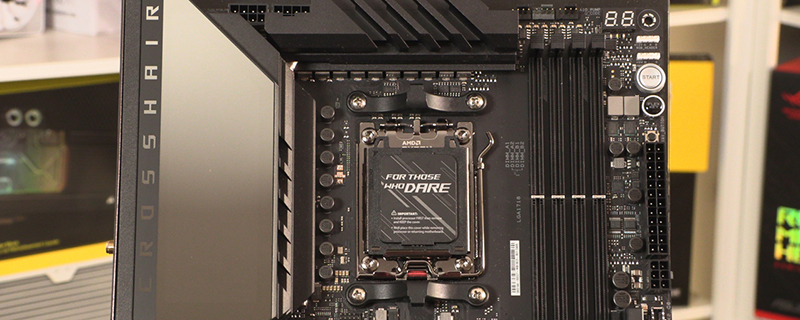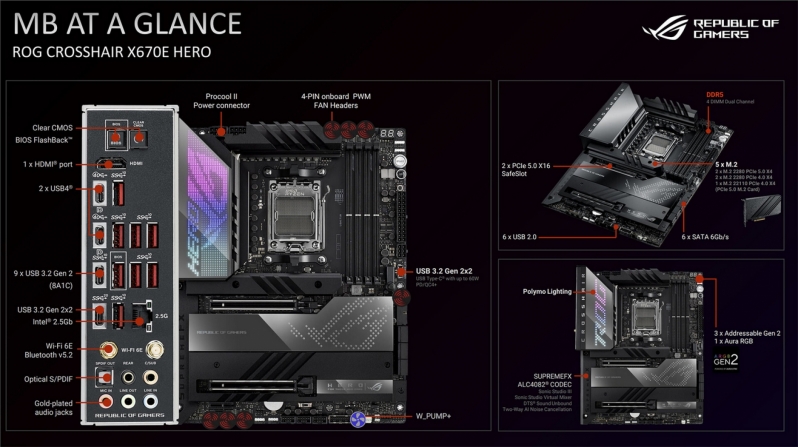ASUS ROG Crosshair X670E Hero Review
Introduction
By now you’ll be familiar with the ASUS ROG Crosshair X670E Hero which was the motherboard we used as the baseline for our testing of the new AM5 Ryzen 7000 series of processors. Whenever we’re testing a new generation of something you need to use a product with which you’re most familiar to enable the fastest diagnosis of any issues you come across, and the fastest getting of results. Although it might not look like it to you, dear reader, who arrive with everything done, we can’t express enough how tight timings always are behind the scenes. With many sites not caring about breaking NDAs manufacturers release their products and information as late as possible. Fine for them but it makes our life a bit stressful, particularly when we’ve spent the last few months kicking our heels.
There are a few ASUS ROG motherboards launched as part of the X670E release, and whilst the Extreme might get all the plaudits and the Strix probably sell the most units, we like the Crosshair Hero as the perfect balance between functionality and relative affordability. We accept it’s by no means the cheapest of AM5 motherboards, but when you’re getting the type of performance we’ve seen from the latest generation of AMD Ryzen processors you want to extract all you can with the minimum of fuss.
With a retail of £679.99 the Crosshair X670E Hero is at the upper end of the AM5 motherboards, but this is also the beginning of the AM5 platform so you know, with AMDs track record, this will be the foundation of your system for years to come.
Technical Specifications
We’ve seen a lot of different power solutions across the various X670E motherboards we’ve had in the office and the Crosshair Hero is no exception. Rather than making do with just enough power the Hero has, instead, totally pushed the boat out with 18+2 teamed 110A power stages. Plenty of performance for any 7000 series Ryzen, as well as enough to handle whatever the 8000 series requests whenever that appears. PCIe 5.0 slots and M.2 support are all the bandwidth one expects from the new AM5 socket. ASUS have also flooded the board with USB ports, including two USB 4 Type-C numbers if you really can’t get enough throughput.




